
Bajram Curri was an Albanian chieftain, politician and activist who struggled for the independence of Albania, later struggling for Kosovo's incorporation into it following the 1913 Treaty of London. He was posthumously given the title Hero of Albania.

Kachaks is a term used for the Albanian rebels active in the late 19th and early 20th century in northern Albania, Montenegro, Kosovo and Macedonia, and later as a term for the militias of Albanian revolutionary organizations against the Kingdom of Serbia (1910–18) Kingdom of Yugoslavia (1918–24), called the "Kaçak movement".

Hasan bey Prishtina,, was an Ottoman, later Albanian politician, who served as the 8th prime minister of Albania in December 1921.

Drenica, also known as the Drenica Valley, is a hilly region in central Kosovo, covering roughly around 700 square kilometres (270 sq mi) of Kosovo's total area (6%). It consists of two municipalities, Drenas and Skenderaj, and several villages in Klina, Zubin Potok, Mitrovica and Vushtrri. It is located west of the capital, Pristina.

Skenderaj or Srbica is a town and municipality located in the Mitrovica District of Kosovo. According to the 2011 census, the town of Skënderaj has 9,372 inhabitants, while the municipality has 50,858 inhabitants.
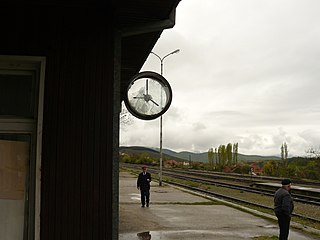
Zajas is a village in the municipality of Kičevo, North Macedonia. Zajas was the seat of the Zajas Municipality, and is now in Kičevo Municipality.
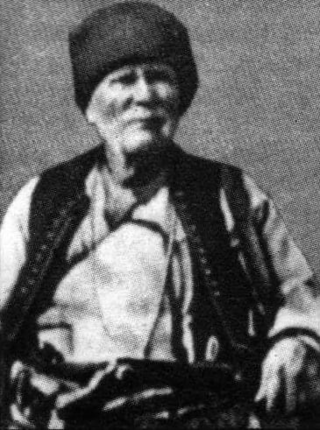
Idriz Seferi was an Albanian leader and guerrilla fighter (rebel). During his 56 year military career, he fought in 35 battles. A member of the League of Prizren and League of Peja, he was the right-hand man of Isa Boletini, with whom he organized the 1910 Uprising against the Ottoman Empire in the Kosovo Vilayet. After the suppression of the uprising, Seferi continued warfare, in the 1912 Uprising. In the First Balkan War, Boletini and Seferi rose up against Serbia, with whom they had previously been allies to during the 1910 and 1912 Uprisings, and continued to attack Serbian posts in the subsequent occupation and initial phase of World War I (1913-1915). In the second phase of the war (1916-1918), he led troops against Bulgarian forces.

Azem Bejta, commonly known as Azem Galica, was an Albanian nationalist and rebel who fought for the unification of Kosovo with Albania.

The Battle of Junik was a battle fought during the Kosovo War between the ethnic Albanian paramilitary organization known as the Kosovo Liberation Army (KLA) and the security forces of the Federal Republic of Yugoslavia over the town of Junik in western Kosovo.

Independent Albania was proclaimed on 28 November 1912. This chapter of Albanian history was shrouded in controversy and conflict as the larger part of the self-proclaimed region had found itself controlled by the Balkan League states: Serbia, Montenegro and Greece from the time of the declaration until the period of recognition when Albania relinquished many of the lands originally included in the declared state. Since the proclamation of the state in November 1912, the Provisional Government of Albania asserted its control over a small part of central Albania including the important cities of Vlorë and Berat.
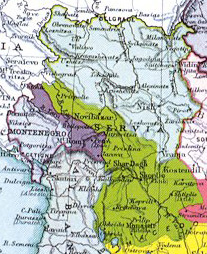
The colonization of Kosovo was a programme begun by the kingdoms of Montenegro and Serbia in the early twentieth century and later implemented by their successor state Yugoslavia at certain periods of time from the interwar era (1918–1941) until 1999. Over the course of the twentieth century, Kosovo experienced four major colonisation campaigns that aimed at altering the ethnic population balance in the region, to decrease the Albanian population and substitute them with Montenegrins and Serbs. Albanians formed the ethnic majority in the region when it became part of Yugoslavia in early twentieth century.

Shaban Mustafë Kastrati, known as Shaban Polluzha, was a Kosovo Albanian military leader and Nazi collaborationist active in Drenica during World War II. He served in the Royal Albanian gendarmerie and as a commander of the Vulnetari militia. He was briefly a member of the Balli Kombëtar. He was killed by the Yugoslav Partisans.

Shote Galica, born as Qerime Radisheva, was a Kachak Albanian insurgent. She has been declared a People's Heroine of Albania.

The Committee for the National Defence of Kosovo was an Albanian organization founded in Shkodër on 1 May 1918. It was mainly consisted of the political exiles from Kosovo and was led by Hoxha Kadri from Pristina. It existed in looser form since May 1915.
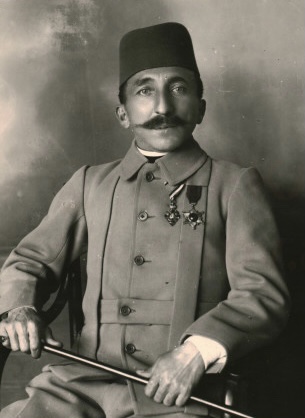
Hysni Curri (?–1925) was a Kosovar Albanian military figure and a prominent leader of the Kachak movement and the Committee for the National Defence of Kosovo.
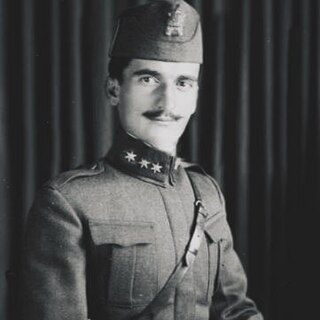
Prenk Pervizi was an Albanian military figure, General of the Albanian army, who also served as Minister of Defence for a short period during World War II. Pervizi attended the Military Academy in Vienna, Austria, from 1914 to 1918, and later in Torino, 1930–1933. As a military figure, he was a protagonist in the foreground of Albanian history in the years between 1918 and 1944. Friend and right-hand man of King Zog, he remained loyal from the beginning to the end to him and the Albanian Kingdom, 1928–1939. During World War II he was involved in military operations. Recruited by the Italians and sent to the first line of combat, he came into conflict with them, withdrawing the Albanian troops from the Greco-Italian War. He also opposed the German SS troops recruitment process in Albania. Bitter opponent of the communists, after failed attempts to engage some serious support from the British emissaries, he was forced to exile, first in Greece and later in Belgium as a political refugee. He spent the rest of his life in Belgium, where he died at age 80, on 6 September 1977.
The Neutral Zone of Junik (1921–1923) was a neutral demilitarized border area between the Kingdom of Yugoslavia and the Principality of Albania.
Asllan Curri (?-1925) was a member of the kachak movement in early 20th century in Kosovo and North Albania.

Jusuf Mehonjić (1883-1926) was an Albanian leader of the kachak movement and member of the Committee of Kosovo from Šahovici.

Kosovo during the Second World War was in a very dramatic period, because different currents clashed, bringing constant tensions within it. During World War II, the region of Kosovo was split into three occupational zones: Italian, German, and Bulgarian. Partisans from Albania and Yugoslavia led the fight for Kosovo's independence from the invader and his allies. During occupation by Axis powers, Bulgarian and Albanian collaborators killed thousands of Kosovo Serbs and Montenegrins. Tens of thousands were also expelled or were placed into concentration camps.

















